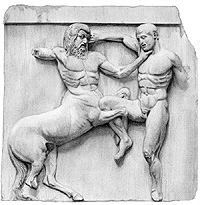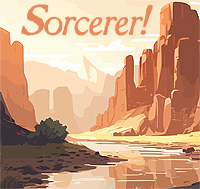Harvard University Press, Cambridge, MA 1978, 677 pages
If you are a researcher, this is a five star book. Like the title and the cover jacket this piece of work is gold. Within there is 16th and 17th Century artwork alongside photos of modern Amazonian Natives. Hemming was an important member of the Aborigines Protection Society. I know my neo-con and Libertarian buddies are groaning. Never fear this is not a ‘Europeans are uniquely evil’ whine-fest.
Hemming starts out with how he first contacted Native Brazilians. He goes on to provide three detailed maps and then jumps into the story from the European perspective. The Native viewpoint is provided piecemeal as it is relevant to the story, which is the story of a conquest, and the prime movers in the story were the conquerors.
The conquerors were not just Portuguese but Dutch, French, English and Spanish. These conquerors were also not alone. There were many tribes of Indians that initially triumphed against the puny diseased midgets that invaded their ancestral lands. Many survived European Contact longer than many of their North American and Central American counterparts.
The Native themselves were of varied customs and largely more civilized than the Europeans, which makes the reader want to hope the story somehow ends differently than it does. This subject has not often been touched upon in film. The only treatments I can remember are The Mission [1980s] and The Emerald Forest [1990s]. These films bring us to two remarkable facts about the South American conquest, which are both detailed in Red Gold.
The Jesuits had their finest hour in South America. This cult of catholic educator-monks set up missions to protect the Natives from slave raiders. These monks were often killed defending their Native ‘flocks.' The purely tragic aspect of this resistance was the fact that moving into population centers resulted in mass die-offs from European plagues just as in Central and North America.
The second tragedy, laced with triumph, was when the pope in Rome and the kings of Spain and Portugal sided with the slavers in the mid to late 1700s. The Jesuits were called back after having committed the unpardonable sin against Christ of setting up a Native American Christian theocracy in Paraguay that successfully resisted slave raids. It would take the European invaders until the late 1860s to wipe out the Paraguay nation, which required half the man power of European descent in South America. Even after this unparalleled racial holocaust Native Americans still live free, if in small bands, in the rain forests to this day. It is also no small thing that a few Jesuit scholars served as Christian generals leading naked men against gun-bearing armies of slavers, thereby doing more to redeem Christianity then all the degenerate kings and popes in Europe over the 500 sordid years of the Euro-American Invasion, which is still yet to be total.
Hemming closes his book with exhaustive endnotes and a detailed population analysis, which strikes at the core of the book. Hemming titled his work Red Gold because the people of the Amazon basin were seen by the European invaders, not as vermin to be erased like in North America, but as prime slave stock to be farmed. Their tenacious resistance necessitated importation of African slaves to staff Brazilian plantations. The story of the Brazilian conquest is in many ways more like ‘pirates and Indians’ than ‘cowboys and Indians,’ and offers many a colorful character. This book was an enjoyable read and, despite being a Native American advocate, the author sticks to the story, rather then turn it into a New Age guilt crusade.
Once again we are treated to a tale that tells us that the supposed ‘racial super warriors’ of Europe generally got their heads handed to them when dealing with pre-plague Stone Age people, and generally lacked the intelligence to fight low intensity wars against the most wasted remnant populations without the aid of Native and half-breed allies.
An interesting aspect of the early discovery is how impressed the Europeans were with the character and strength of the Natives. What most people do not understand about early European contact with Stone Age societies, is that Stone Age life is much healthier, and produces much stronger warriors, than medieval or Renaissance life. Simply put, a soldier raised on bread and wine, in a society where drinking water is a death sentence, has very little chance of surviving hand-to-hand combat with a hunter raised on meat, fruit and clean water. That is why even with extreme technological advantages it took hundreds of years to murder small numbers of disorganized tribesman, even after most succumbed to alien diseases. Unlike the high plains of Mexico, the forests of Brazil forced the European off his horse and out from behind his gun, and made him fight man-to-man, where he was found wanting.











